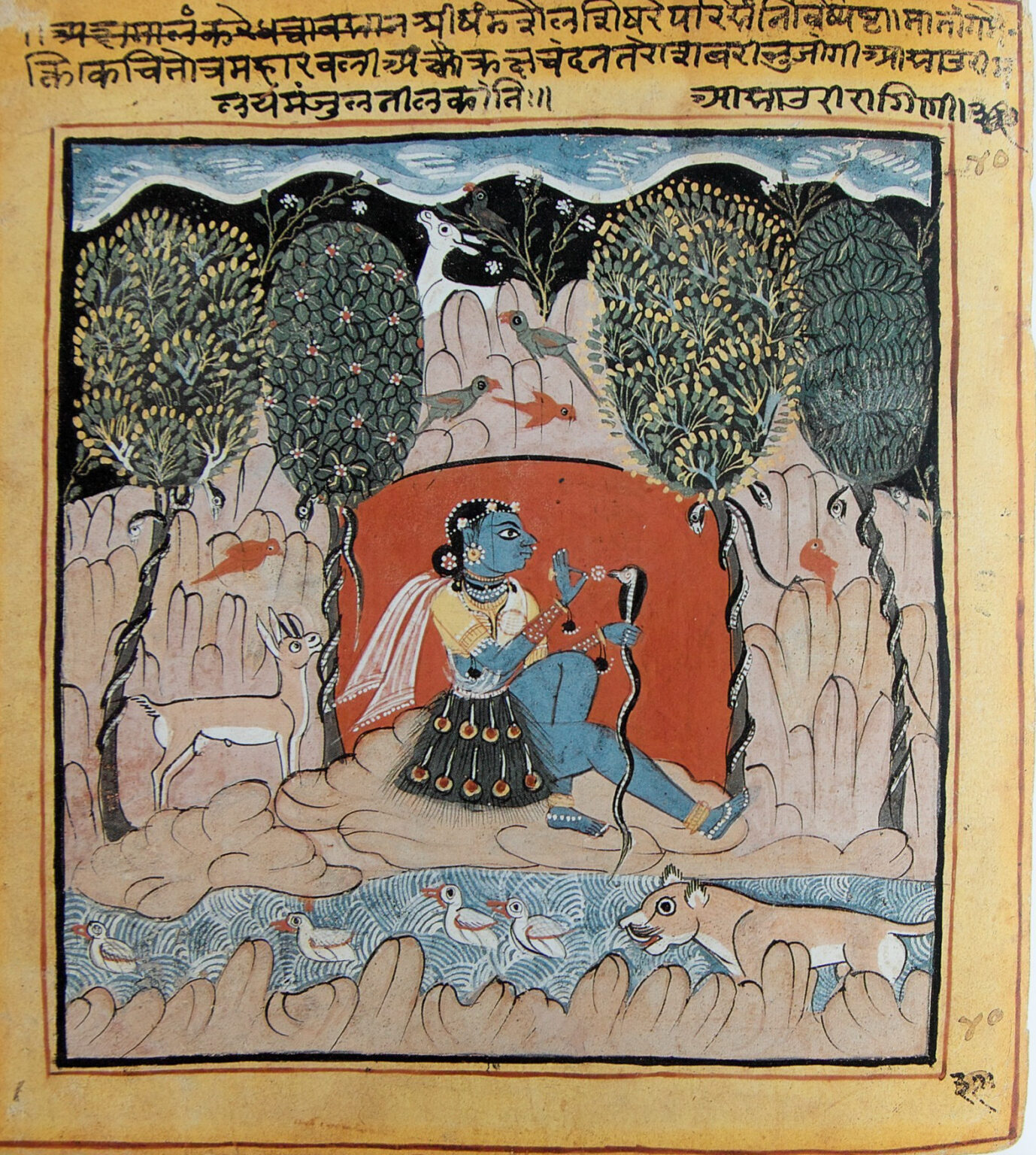An evocative narration of history woven with a beautiful string of classical music makes Chawand Ragamala a priceless treasure
Rajasthani painting is a classical Indian artform. Trying to trace its history is akin to travelling back in time 450 years to a place called Chawand near Udaipur, south of Rajasthan to witness one of the glorious times in Indian history.
Chawand was the last capital of the legendary Maharana Pratap Singh, of the Rajput kingdom of Mewar. After the battle of Haldighati with the Mughals in 1576, Maharana Pratap Singh (r.1572–1597) captured this area from the Rathores and established his new capital in 1585. He built palaces, fortifications and hideouts here and ruled from exile along with his son Rana Amar Singh. He died in an accident in 1597.
Rana Amar Singh (r. 1597–1620) continued his defiance of the Mughals and continued operating from Chawand. Maharana Amar Singh unfortunately lost the battle led by Prince Khurram (later Emperor Shah Jahan) which caused heavy damage to life and property of Mewar in 1615. He had to enter into a treaty with Jahangir. However, the territories around Chittor along with the Chittorgarh Fort were given back to Mewar in 1616 by Jahangir.
The Chawand Ragamala set of paintings
Rana Amar Singh is said to have commissioned a ‘Ragamala’ painting set now called the ‘Chawand Ragamala’ dated 1605 A.D. Why is this art historically so important? Well, the Chawand Ragamala is considered to be the earliest dated example of Mewar paintings in Rajasthan. Amar Singh ruled from Chawand (1585–1605), in a small palace.
The earliest documented Mewar royal patronage of painting occurred in this period: the Chawand Ragamala was painted by Nis-ardin (also called Nasruddin) in 1605. The Chawand Ragamala represents the final phase of the early Rajput style, and the foundation for the later Mewar style. This group of paintings is the earliest dated Rajasthani ‘Ragamala’ and is an important landmark in the history of Rajasthani painting.
The folios are mostly vertical and depict the rocky landscape as mounds, and the use of architectural elements help to compartmentalise the composition. Tall trees are well depicted and undulating horizon lines are seen painted as well. Animals and birds are a common part of the folio. The set is now scattered across different museums and collections.
The Garland of ‘ragas’
A ‘raga’ is a traditional Indian musical form or mode. A ‘Ragamala’ meaning a ‘garland of ragas’ is a set of paintings in which each raga is represented by a scene relating to the raga being depicted. They are a symphony of art, poetry and classical music of India. There are six main ragas; Bhairava, Malkaus, Deepak, Hindol, Shri and Megha and each raga has accompanying female ‘raginis’ as well, also their numerous sons, ‘ragaputra’, and daughters ‘ragaputri’.
Let us check out few Chawand Ragamalas from this historic set:
Todi ragini of Deepak:
A forlorn heroine separated from her lover is seen with a musical instrument, deer seem her only company who are mesmerised with her music. She walks in a grove, her sakhi or companion seems to have come to meet her. When sung too, the raga depicts pathos though there is always a chance of exaltation towards its ending.
Gunakari ragini of Malkaus:
This Ragamala depicts a woman plucking leaves as she waits for her beloved. She has made some garlands and hung them on the trees. Her companion watches her. An ewer, peacocks on the roof of a pavilion, and swans are part of the composition. The ragini represents passion and anticipation as seen in the painting.
Maru ragini of Malkaus:
The depiction is from the love story of Dhola-Maru. Both are seen on a camel. There is an attendant and two pet dogs in the painting, as they cross the floral landscape. This Ragamala composition captures the final escape and union of Marwar Prince Dhola and Poogal Princess Maru on a flying camel, a story which is part of Rajasthani folklore. The ragini depicts passion, longing and victory of love.
Asavari ragini of Shri:
This Ragamala composition shows a woman in the wilderness, probably a tribal woman in a peacock-feather skirt feeding flowers to a snake in a rocky landscape with a backdrop of flowering trees. The raga is representative of a woman who can charm snakes with music or dance, a lone figure, a ‘yogini’ who follows the ascetic path owing to a lover who has abandoned her. The ragini depicts pathos and longing.

